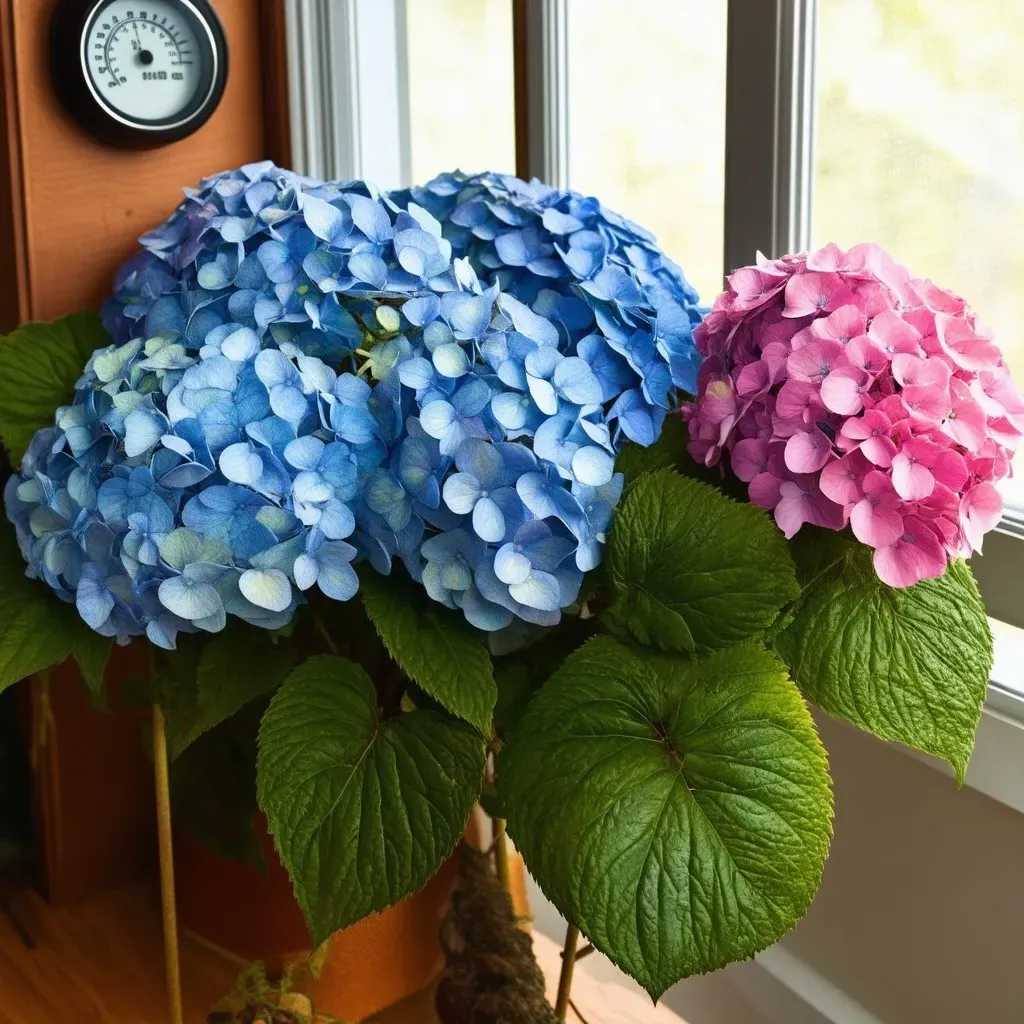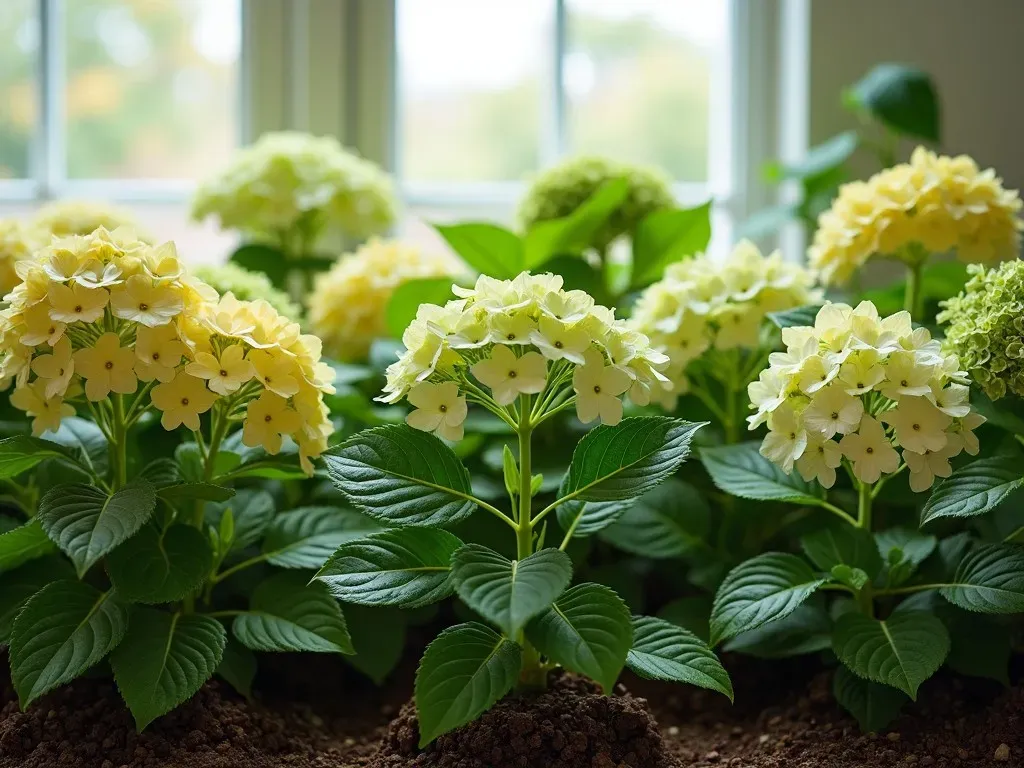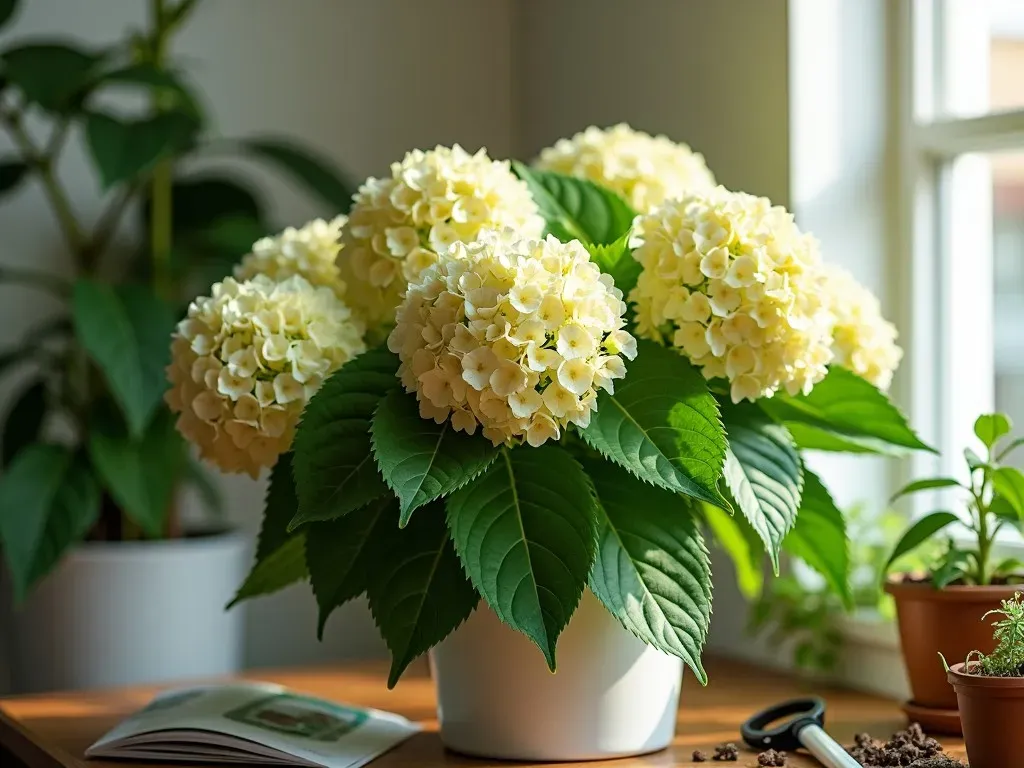Hydrangeas are truly magnificent plants that can bring a splash of color to any indoor space. However, many people wonder how to care for hydrangeas indoors effectively. Below, we will explore the essential aspects of hydrangea care indoors, giving you the tools you need to keep these beautiful blooms thriving year-round.
Understanding Indoor Hydrangeas
Indoor hydrangeas, commonly sold as potted plants in nurseries or grocery stores, are often bred for shorter lifespans compared to their outdoor counterparts. With the right care, however, you can enjoy your hydrangea plants for more than just one blooming season.
Key Differences Between Indoor and Outdoor Hydrangeas
| Feature | Indoor Hydrangeas | Outdoor Hydrangeas |
|---|---|---|
| Light | Requires bright, indirect sunlight | Thrives in partial shade |
| Temperature | Prefers room temperature (65°F – 75°F) | Can tolerate a variety of outdoor conditions |
| Bloom Duration | Typically lasts 4-6 weeks | Blooms can last for months |
| Potting | Grown in pots, requires repotting | Grown in the ground, needs space to root |
Growing Hydrangeas Indoors
Can You Grow Hydrangeas Indoors?
Yes, hydrangeas can be successfully grown indoors, provided you follow their care requirements closely.
Will Hydrangeas Grow Inside?
Yes, indoor hydrangeas can thrive if conditions such as light, humidity, and watering are managed appropriately.
Essential Hydrangea Care Indoors
1. Light Requirements
- Direct Sunlight Risk: Unlike many plants, indoor hydrangeas do not fare well in direct sunlight for extended periods, which can scorch their leaves and flowers.
- Optimal Positioning: Place your hydrangeas in a location where they receive 4-6 hours of bright, indirect sunlight daily. The best spots are usually south or east-facing windows that provide morning sun.

2. Watering Practices
- Consistent Moisture: Keep the soil evenly moist but not soggy. Check the moisture level by inserting your finger into the soil—if it feels semi-dry 3 inches down, it’s time to water.
- Watering Frequency: Hydrangeas will require more water while they are blooming. This often means watering them every few days or more frequently during hotter months.
3. Humidity Levels
- Ideal Humidity: Hydrangeas prefer a humidity level of around 40-45%. During dry months or in heated indoor environments, consider using a humidifier or placing a tray of water near the plant to maintain adequate moisture in the air.

4. Fertilization
- Feeding Schedule: Use a water-soluble fertilizer at half strength while the plant is blooming, feeding every week. After blooming, reduce to once a month until their dormant period in fall and winter.
5. Dormancy
- Seasonal Changes: Indoor hydrangeas need a period of dormancy after flowering. Move the plant to a cooler location with temperatures around 45°F (7°C) and keep the soil slightly moist during this time.

FAQs on Indoor Hydrangea Care
1. Can I grow hydrangeas indoors all year?
While you can keep indoor hydrangeas year-round, be prepared for them to go dormant in the fall and winter months.
2. How long do indoor hydrangeas last?
Typically, you can expect indoor hydrangeas to last 4-6 weeks of blooming, depending on care and conditions.
3. What if my indoor hydrangea stops blooming?
If your hydrangea stops blooming, check conditions like light, humidity, and watering. Additionally, adjust your fertilization schedule to encourage new growth.
4. Can I put my indoor hydrangea outside after blooming?
While it is possible to transfer your hydrangea outdoors after blooming, it is essential to gradually acclimate it to direct sunlight and outdoor conditions.
Common Mistakes in Hydrangea Care Indoors
Overwatering
Overwatering is a common mistake that can lead to root rot. Always ensure that your pot has adequate drainage.
Insufficient Light
Many indoor gardeners underestimate the light needs of hydrangeas. Ensure they receive the right amount of indirect sunlight.
Ignoring Dormancy
Failing to provide a dormant period can lead to poor growth and fewer blooms. Keep indoor hydrangeas cool and reduce watering during the dormancy phase.
Conclusion
Understanding how to care for hydrangeas indoors is not only rewarding but allows you to enjoy vibrant blooms right in your home. By ensuring proper light, water, humidity, and fertilization, you can create the perfect environment for these enchanting plants. For further insights, consider visiting Gardening Know How for more expert gardening advice.
Additional tips can make all the difference in your indoor garden. Happy planting!



